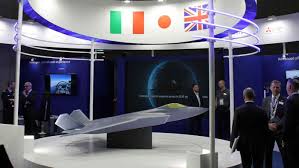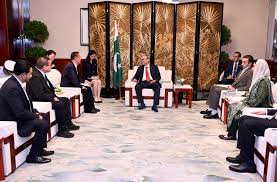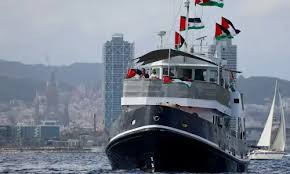Japan approves treaty for next-gen fighter development with UK, Italy

Tokyo: Japan’s upper house on Wednesday approved a treaty to establish a management body for the next-generation fighter jet being developed by Japan, the U.K. and Italy, with discussions now likely to center on how the three countries will share development costs.
The Global Combat Air Programme International Government Organisation (GIGO), set to launch within the year, will serve as a coordinator for governments and companies involved in the project.
GIGO will be headquartered in the U.K., and the first head will be Japanese. It will be staffed by several hundred people from the three countries, including dozens from Japan’s Ministry of Defense.
The fighter will be the successor to the Japan Air Self-Defense Force’s F-2 and the Eurofighter Typhoon operated by the U.K. and Italian militaries.
With an eye on the security environment a decade from now, the sixth-generation fighter will have stealth capabilities and the ability to work with drones. Development of a prototype will begin in 2026, with the ASDF aiming to deploy the fighter around fiscal 2035.
The joint venture overseeing development will include multiple defense-related companies from the three countries. Development will be divided into parts like the airframe, engine and electronic systems. The division of tasks is being decided according to the degree of financial and technical contribution.
The airframe will be handled by Japan’s Mitsubishi Heavy Industries, the U.K.’s BAE Systems and Italy’s Leonardo. They agreed to clarify the long-term division of roles in the fall of 2023.
Japan’s IHI will work on the engine, and Mitsubishi Electric will oversee the electronic equipment to be installed in the airframe.
If Japan can take the lead in some areas of development, it may be able to obtain advanced technology and valuable know-how. This is the first time Japan has embarked on a major defense development project with a country other than the U.S. The experience gained could be used on other future international joint projects.
Japan has had mixed experiences in the past regarding joint development. When Japan and the U.S. jointly developed the F-2 in the 1980s based on the U.S. F-16 fighter, Washington refused to provide some core technology to Tokyo. On the other hand, Japan was pressured to disclose technology to the U.S., leaving it unsatisfied with the terms of the project.
The division of work this time is expected to come down to how the project’s development costs, estimated to be in the trillions of yen (1 trillion yen equals $6.4 billion), will be split. Work on the Eurofighter Typhoon, which was jointly developed by the U.K., Italy, Spain and Germany, was split similarly to the investment ratio.
The three governments are working out their contributions to GIGO in order to fairly share the burden, but discussions on total costs have yet to begin. A proposal currently being discussed has Japan and the U.K. shouldering 40% each and Italy covering the rest. Details will be decided by the end of 2024.
Japanese defense contractors have been lifted of late thanks to the government’s efforts to strengthen defense capabilities. The next-generation fighter plan is a key to getting business back on track.
In March, the government revised the operational guidelines for its Three Principles on Transfer of Defense Equipment, paving the way for the export of the new fighters.
Mitsubishi Heavy Industries will add a development building to its plant in Aichi prefecture in preparation for the project moving forward. Personnel working on the project will be expanded as necessary, including some engineers who had been working on the Mitsubishi SpaceJet, a regional passenger jet the company abandoned mid-development last year.
IHI, which produces fighter jet engines, is ramping up hiring and reorganizing personnel in preparation for the project and is considering a 50% boost in the number of employees working on defense equipment by fiscal 2025.
The investment ratio between the three countries should be “based in the spirit of equal partnership, with allocations according to each country’s financial and technological contributions,” IHI said.





